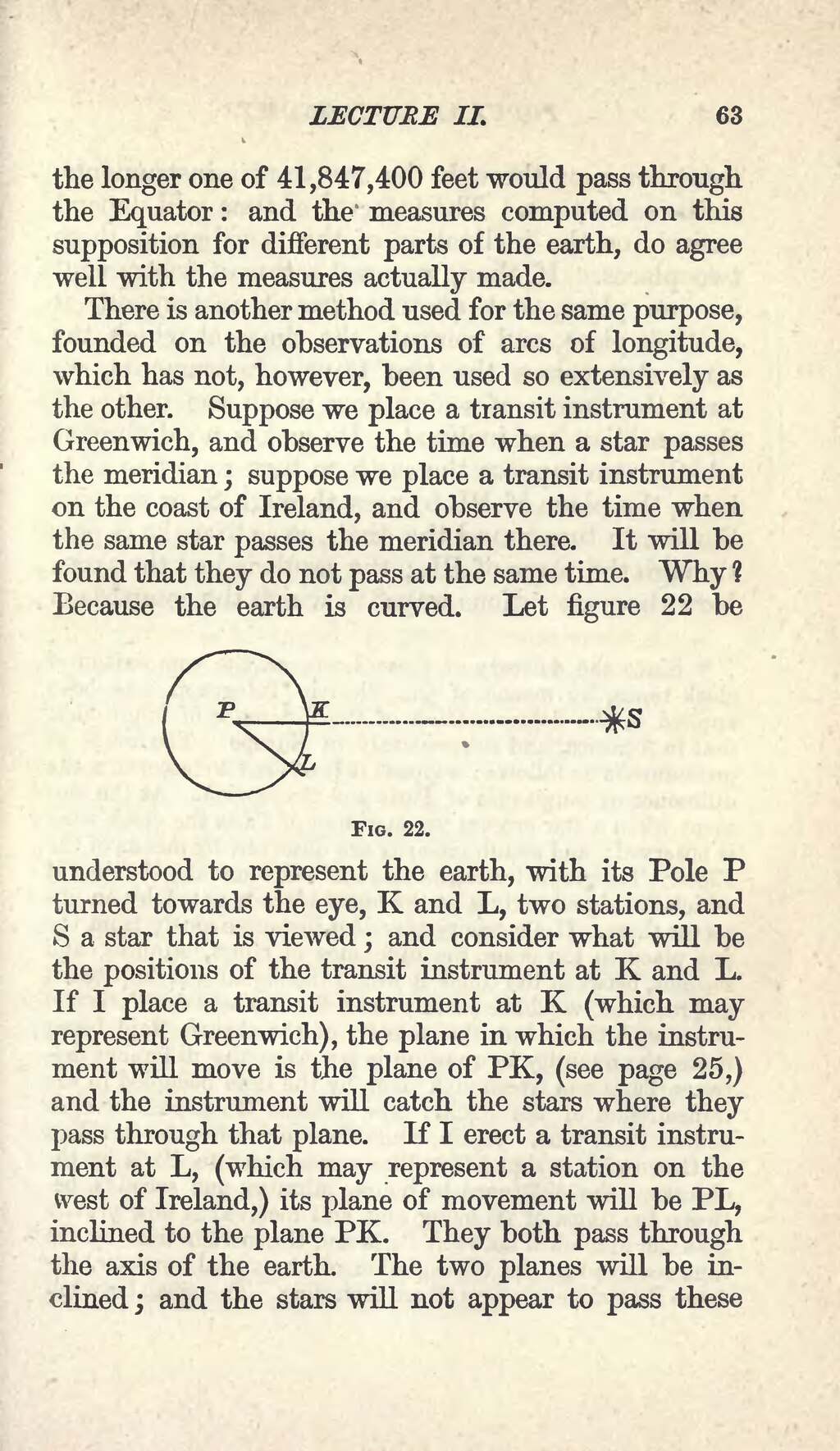the longer one of 41,847,400 feet would pass through the Equator: and the measures computed on this supposition for different parts of the earth, do agree well with the measures actually made.
There is another method used for the same purpose, founded on the observations of arcs of longitude, which has not, however, been used so extensively as the other. Suppose we place a transit instrument at Greenwich, and observe the time when a star passes the meridian; suppose we place a transit instrument on the coast of Ireland, and observe the time when the same star passes the meridian there. It will be found that they do not pass at the same time. Why? Because the earth is curved. Let figure 22 be

Fig. 22.
understood to represent the earth, with its Pole P turned towards the eye, K and L, two stations, and S a star that is viewed; and consider what will be the positions of the transit instrument at K and L. If I place a transit instrument at K (which may represent Greenwich), the plane in which the instrument will move is the plane of PK, (see page 25,) and the instrument will catch the stars where they pass through that plane. If I erect a transit instrument at L, (which may represent a station on the west of Ireland,) its plane of movement will be PL, inclined to the plane PK. They both pass through the axis of the earth. The two planes will be inclined; and the stars will not appear to pass these

